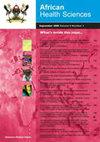双源CT 70 kV双低剂量冠状动脉成像技术在腹部脂肪患者中的可行性研究
IF 0.9
4区 医学
Q3 MEDICINE, GENERAL & INTERNAL
引用次数: 0
摘要
目的:探讨低对比剂浓度和低管电压在高BMI (26kg/m2)和超高BMI (28kg/m2)患者冠状动脉CTA中的应用。方法:将60例高BMI (26kg/m2≤28kg/m2)患者和60例超高BMI (BMI>28kg/m2)患者随机分为双低A组(n=30,管电压= 70 KV)和双低B组(n=30,管电压= 70 KV),用270 mgI/ml造影剂进行SAFIRE迭代重建。常规组a (n=30,管电压= 120 KV),常规组b (n=30,管电压= 120 KV),使用过滤后投影(FBP)和370 mg I/ ml造影剂。比较各组间图像优良指数(FOM)、有效辐射剂量(ED)、CT均值、信噪比(SNR)、噪声对比比(CNR)。 结果:两组患者冠状动脉图像质量主观评分差异无统计学意义(P>0.05)。A组ED(1.103±0.101 mSv)显著低于A组(4.663±0.412 mSv)(P<0.001)。两亚组的平均CT值、信噪比、CNR比较,差异均无统计学意义(P>0.05)。A组的影像优良指数(FOM)高于A组(p < 0.05)。A组总碘含量和碘注射率低于A组(P<0.001)。两个超高亚组冠状动脉图像质量主观评分差异有统计学意义。B组平均CT值、信噪比、CNR均低于B组(p < 0.05)。B组14例患者影像不能满足诊断要求。 结论:对于腹部BMI较高(26Kg/m2及≤28Kg/m2)的患者,将管电压降低至70KV是可行的。对于BMI超高的腹型肥胖患者(BMI>28Kg/m2),在同等条件下,70kv不能满足日常诊断需求。 关键词:辐射剂量;断层扫描;冠状动脉;迭代重建;对比剂;腹部肥胖。本文章由计算机程序翻译,如有差异,请以英文原文为准。
A feasibility study of 70 kV double low-dose coronary imaging technique in abdomen-fatty patients using dual-source CT
Objective: To investigate the aplication of low contrast agent concentration and low tube voltage in coronary CTA on patientswith high BMI (26kg/m228kg/m2).
Methods: 60 patients with high BMI (26kg/m228kg/m2) wererandomly divided into two groups: double low group A (n=30, tube voltage = 70 KV), double low group B (n=30, tube voltage= 70 KV), processed by SAFIRE iterative reconstruction with 270 mgI/ml contrast agent. Conventional group a (n=30, tubevoltage = 120 KV), conventional group b (n=30, tube voltage = 120 KV), with filtered back projection (FBP) and 370 mg I/mlcontrast agent. the image excellent index (FOM), the effective radiation dose (ED), mean CT value, signal-to-noise ratio (SNR),and contrast-to-noise ratio(CNR) between corresponding groups were compared.
Result: There was no significant difference in subjective scores of coronary artery image quality between the two high BMIsubgroups (P>0.05).The ED of group A (1.103±0.101 mSv) was significantly lower than that of group a (4.663±0.412 mSv)(P<0.001).There was no significant difference in mean CT value, SNR and CNR between the two subgroups (P>0.05).The imageexcellent index (FOM) of group A was higher than that of group a (P<0.05).The total iodine content and iodine injectionrate in group A were lower than those in group a (P<0.001).The difference of subjective scores of coronary artery image qualitybetween the two ultra-high subgroups was significant. The mean CT value, SNR and CNR of group B were lower than those ofgroup b (P<0.05). The images of 14 patients in group B could not meet the diagnosis demand.
Conclusion: It is feasible to reduce the tube voltage to 70KV in patients with abdominal BMI with high BMI (26Kg/m228Kg/m2), under the same conditions, the70KV can not meet the daily diagnosis requirement.
Keywords: Radiation dose; tomography; coronary artery; iterative reconstruction; contrast agent; abdominal obesity.
求助全文
通过发布文献求助,成功后即可免费获取论文全文。
去求助
来源期刊

African Health Sciences
MEDICINE, GENERAL & INTERNAL-
CiteScore
2.30
自引率
0.00%
发文量
179
审稿时长
>12 weeks
期刊介绍:
The African Health Sciences is an internationally refereed journal publishing original articles on research, clinical practice, public health, policy, planning, implementation and evaluation, in the health and related sciences relevant to Africa and the tropics. Its objectives are to: Advocate for and promote the growth of reading culture in sub Saharan Africa; Provide a high quality journal in which health and policy and other researchers and practitioners in the region can and world wide, can publish their work; Promote relevant health system research and publication in the region including alternative means of health care financing, the burden of and solution of health problems in marginalized urban and rural communities amongst the displaced and others affected by conflict; Promote research and the systematic collection and collation and publication of data on diseases and conditions of equity and influence; Promote development of evidence-based policies and guidelines for clinical, public health and other practitioners. African Health Sciences acknowledges support provided by the African Health Journals Partnership Project that is funded by the US National Institutes of Health (through the National Library of Medicine and the Fogarty International Center) and facilitated by the Council of Science Editors.
 求助内容:
求助内容: 应助结果提醒方式:
应助结果提醒方式:


